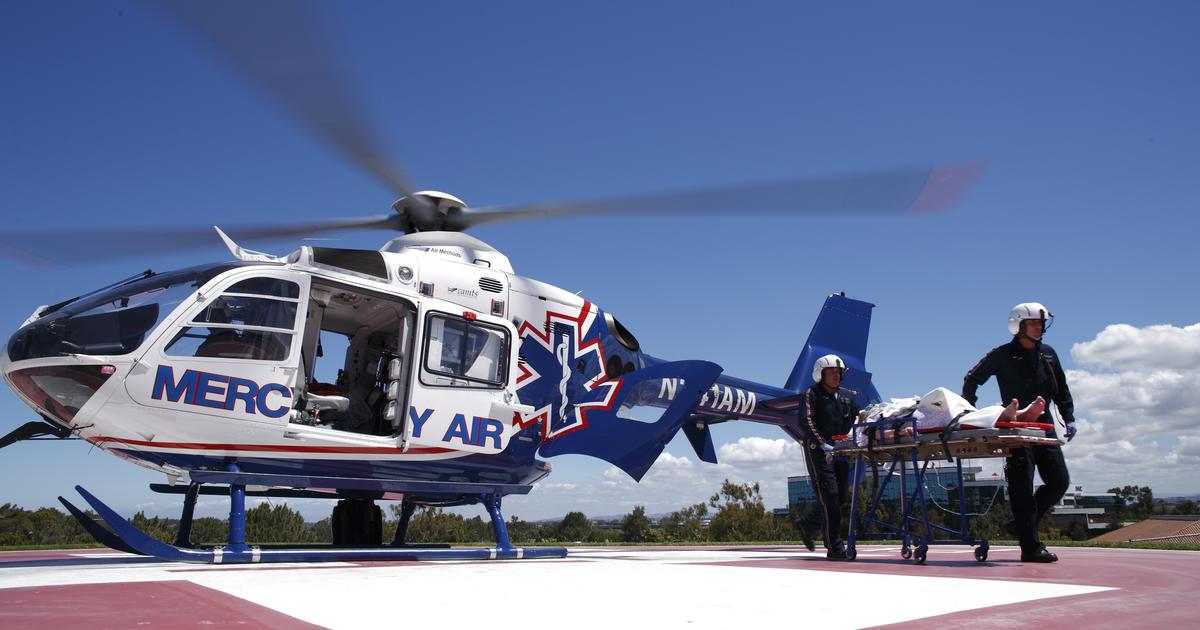So you’re curious about the financial impact of air ambulance transport? Well, let me tell you, it’s something worth exploring. In this article, we’re going to take a deep dive into some real-life case studies that shed light on the costs and implications of utilizing air ambulance services. We’ll explore different scenarios and dissect the financial aspects involved, giving you a clearer understanding of how these services can impact your wallet. So buckle up and get ready to delve into the fascinating world of air ambulance transport and its financial implications through these intriguing case studies.
Introduction
Air ambulance transport plays a crucial role in providing specialized medical care to patients who require urgent and rapid transportation from one location to another. This mode of transport, conducted via helicopters or fixed-wing aircraft, ensures that patients receive timely medical intervention and access to the necessary medical equipment and expertise. In this article, we will explore the concept of air ambulance transport, discuss its importance, examine various factors influencing its cost, and analyze real-life case studies to understand its financial implications. Additionally, we will delve into insurance coverage for air ambulance transport to shed light on the complexities of this aspect. So, let’s embark on this informative journey together and gain a comprehensive understanding of air ambulance transport.
What is Air Ambulance Transport?
Definition and Purpose
Air ambulance transport refers to the transportation of patients who require emergency medical care from one location to another via specialized aircraft, such as helicopters or fixed-wing planes. These dedicated aircraft are equipped with medical equipment and staffed by trained medical professionals who provide immediate medical intervention during transit. The primary goal of air ambulance transport is to ensure the safe and rapid transportation of critically ill or injured patients to healthcare facilities that offer specialized care.
Types of Air Ambulance Services
There are two main types of air ambulance services: rotor-wing and fixed-wing.
Rotor-wing air ambulances, commonly known as medical helicopters, utilize helicopters to transport patients. These helicopters are designed to land in various settings, including remote areas and tight spaces, enabling them to reach patients in difficult-to-access locations. Rotor-wing air ambulances are often deployed for short-distance transports, typically within a 150-mile radius.
Fixed-wing air ambulances, on the other hand, use fixed-wing aircraft, such as airplanes, for patient transportation. These aircraft are equipped with medical equipment, including life support systems, and offer a more controlled environment compared to helicopters. Fixed-wing air ambulances are commonly used for long-distance transports, including international repatriation and critical care transfers between hospitals.

The Importance of Air Ambulance Transport
Now that we have a basic understanding of what air ambulance transport entails, let’s explore the significance of this mode of medical transportation.
Timely Medical Intervention
During medical emergencies, time is of the essence. Air ambulance transport plays a vital role in ensuring that patients receive timely medical intervention. The rapid response and ability to navigate through congested traffic or inaccessible terrain enable air ambulances to transport patients to appropriate healthcare facilities quickly. This prompt medical intervention can significantly improve patient outcomes, especially in critical situations such as heart attacks, strokes, or traumatic injuries.
Access to Specialized Care
Air ambulance transport facilitates access to specialized care that may not be available in the patient’s current location. For instance, in rural areas with limited medical resources, air ambulances can swiftly transport patients to urban hospitals equipped with advanced medical technologies and specialized healthcare professionals. By bridging the gap between medical facilities, air ambulance services ensure that patients receive the necessary treatments and interventions promptly, thus improving their chances of recovery.
Transporting Critically Ill or Injured Patients
In certain cases, transporting critically ill or injured patients via traditional ground transportation is not feasible due to the severity of their condition, proximity to medical facilities, or the need for specialized medical equipment. Air ambulances, with their ability to provide immediate medical support during transit, are specifically designed to transport patients in critical conditions. These specialized aircraft can accommodate life support systems, advanced monitoring equipment, and medical staff capable of delivering high-level care, thus ensuring the patient’s safety and well-being throughout the journey.
Factors Influencing the Cost of Air Ambulance Transport
While air ambulance transport offers invaluable medical assistance during emergencies, it is crucial to consider the factors that influence its cost. Understanding these factors will shed light on the financial implications associated with this service.
Distance and Location
The distance and location of the patient greatly impact the cost of air ambulance transport. Longer distances require more fuel and longer flight times, resulting in higher costs. Additionally, if the patient is in a remote or geographically challenging location that requires specialized equipment or additional flight time, the overall expense may increase further.
Type of Aircraft
The type of aircraft used for air ambulance transport also affects the cost. Rotor-wing air ambulances, typically helicopters, are generally more expensive than fixed-wing aircraft due to their ability to land in various settings and their agility in navigating through urban environments. Fixed-wing air ambulances, while offering a more controlled and spacious environment, are often more cost-effective for long-distance transports.
Medical Staff and Equipment
The presence of medical staff and the type of equipment required during air ambulance transport contribute to the overall cost. Highly trained medical professionals, including doctors, nurses, paramedics, and respiratory therapists, are necessary to ensure the safety and well-being of the patient throughout the journey. Moreover, the need for specialized medical equipment, such as ventilators, cardiac monitors, or medication infusion pumps, can also increase the cost of the service.
Insurance Coverage
Insurance coverage plays a significant role in determining the financial burden on patients utilizing air ambulance services. Depending on the insurance policy and provider, coverage may vary. It is essential for individuals to understand their insurance coverage related to air ambulance transport, including any deductibles, copayments, or limitations on coverage for out-of-network providers. Lack of suitable insurance coverage can potentially result in significant out-of-pocket expenses for patients.
Case Study 1: Rural Emergency
To better comprehend the financial impact of air ambulance transport, let’s explore a real-life case study.
Patient Details
In a small rural town, a 57-year-old man named John suffered a severe heart attack. The local hospital lacked the necessary facilities to provide the specialized care he urgently needed.
Air Ambulance Service Utilized
To ensure timely medical intervention, a rotor-wing air ambulance was dispatched to transport John from the rural town to a regional medical center with advanced cardiac care capabilities.
Cost Breakdown
The total cost of air ambulance transport for John amounted to $37,000. This included expenses related to the medical crew, aircraft operational costs, and medical equipment used during the transport.
Financial Implications
As John did not have insurance coverage for air ambulance services, he was responsible for the entire cost out-of-pocket. This unexpected financial burden placed significant strain on John, causing him to struggle with medical bills and impacting his overall financial well-being.
Case Study 2: International Repatriation
Now, let’s explore another case study involving international repatriation.
Patient Details
Sarah, a 35-year-old woman working abroad, had a severe car accident while traveling in a foreign country. She required immediate medical attention and wished to return to her home country for further treatment.
Air Ambulance Service Utilized
To facilitate her safe return, a fixed-wing air ambulance was deployed to transport Sarah from the foreign country to her home country.
Cost Breakdown
The total cost of the air ambulance transport for Sarah’s international repatriation amounted to $76,500. This included expenses related to international flight permits, medical personnel, ground transportation, and advanced medical equipment onboard the aircraft.
Financial Implications
Luckily, Sarah had international travel insurance that covered air ambulance transport. However, she still had to pay certain deductible and copayment amounts as specified by her insurance provider.

Case Study 3: Neonatal Transfer
Moving on, let’s explore a case study involving the critical transfer of a newborn baby.
Patient Details
In a rural area with limited neonatal facilities, a premature baby named Emma required urgent medical attention, including specialized neonatal care available only at a major city hospital.
Air Ambulance Service Utilized
To ensure the safe and rapid transportation of Emma, a fixed-wing air ambulance equipped with a neonatal intensive care unit (NICU) was utilized.
Cost Breakdown
The total cost of the air ambulance transport for Emma’s neonatal transfer amounted to $53,000. This included expenses related to the NICU equipment, specialized neonatal medical staff, and the aircraft.
Financial Implications
While Emma’s parents had insurance coverage, it did not fully cover the entire cost of the air ambulance service. As a result, they were responsible for a significant portion of the expenses, causing financial strain on their family.
Case Study 4: Trauma Response
Finally, let’s examine a case study involving a rapid trauma response.
Patient Details
In a bustling city, a young man named Alex sustained severe injuries in a motorcycle accident. He required immediate transport to a trauma center with specialized facilities to treat his critical condition.
Air Ambulance Service Utilized
To ensure Alex received prompt medical care, a rotor-wing air ambulance was dispatched to transport him from the accident scene to the trauma center.
Cost Breakdown
The total cost of the air ambulance transport for Alex’s trauma response amounted to $23,500. This included expenses related to the medical crew, rotor-wing aircraft operational costs, and specialized trauma equipment.
Financial Implications
Alex had insurance coverage that partially covered the cost of air ambulance transport. However, due to the high deductible and copayment amount, he still had to pay a substantial portion out-of-pocket, leading to financial stress during his recovery.

Insurance Coverage for Air Ambulance Transport
Understanding insurance coverage for air ambulance transport is essential to mitigate the financial burden on patients and their families.
Understanding Insurance Policies
When it comes to insurance coverage for air ambulance transport, it is crucial to carefully review the terms and conditions of the policy. Different insurance providers offer varying levels of coverage, including deductibles, copayments, and limitations on out-of-network providers. Familiarizing yourself with the specifics of your insurance policy will help you navigate the claims process more effectively.
In-Network vs. Out-of-Network Air Ambulance Providers
Insurance policies often distinguish between in-network and out-of-network air ambulance providers. In-network providers have a negotiated agreement with the insurance company, resulting in lower out-of-pocket expenses for the insured individual. Out-of-network providers, on the other hand, do not have a negotiated agreement, which may leave the insured responsible for a larger portion of the costs. It is crucial to understand the implications of using out-of-network air ambulance services and the potential impact on your finances.
Pre-Authorization and Claims Process
Air ambulance transport typically requires pre-authorization from the insurance provider. This process involves obtaining approval from the insurance company before the transport occurs. Failure to obtain pre-authorization may result in a denial of coverage or increased financial responsibility. Additionally, navigating the claims process and submitting all required documentation promptly is crucial to ensure proper reimbursement from the insurance provider.
Conclusion
Air ambulance transport plays a vital role in providing timely medical intervention and specialized care to patients in need. However, it is important to consider the financial implications associated with this service. Factors such as distance, type of aircraft, medical staff and equipment, and insurance coverage influence the cost of air ambulance transport. Real-life case studies highlight the potential financial burden on patients and their families, emphasizing the importance of understanding insurance policies related to air ambulance services. By gaining knowledge about these aspects, individuals can make informed decisions and better prepare for any potential financial impact when utilizing air ambulance transport.



